From sickly dentist to deadly gunfighter to Tombstone deputy, Doc Holliday became one of the Wild West's most iconic figures before dying at just 36 in 1887.
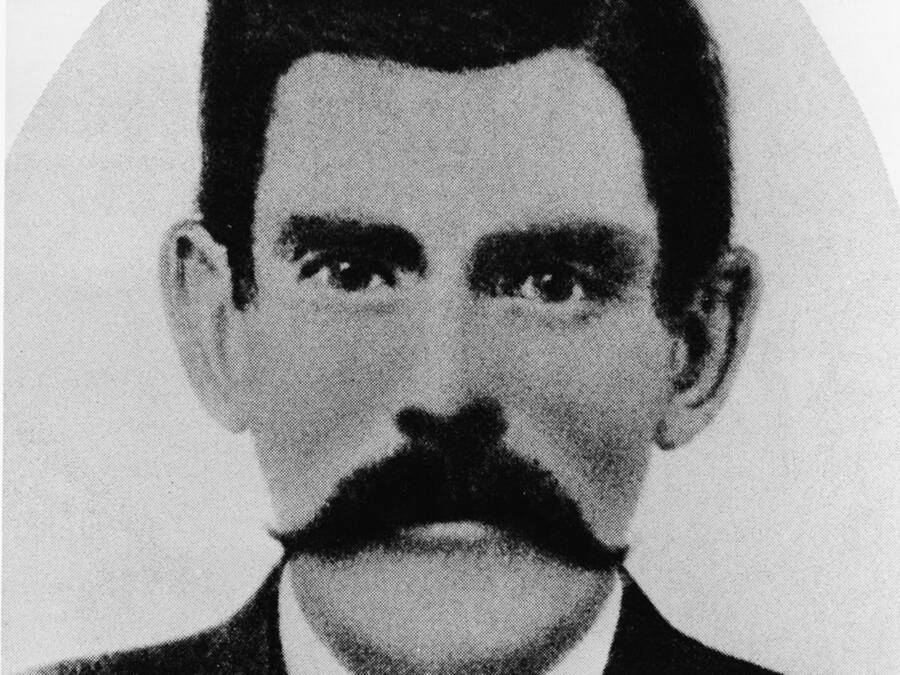
Wikimedia CommonsDoc Holliday in Tombstone, Arizona circa 1882.
When Doc Holliday died in 1887 at the age of 36, his friend Wyatt Earp solemnly and succinctly summed up his fallen comrade’s short life:
“He was a dentist whom necessity had made a gambler; a gentleman whom disease had made a vagabond; a philosopher whom life had made a caustic wit; a long, lean blonde fellow nearly dead with consumption, and at the same time the most skillful gambler and nerviest, speediest, deadliest man with a six-gun I ever knew.”
Trained as a dentist, Doc Holliday first arrived in Texas in the dangerous, waning days of the American Frontier. He quickly grew a reputation as a gambler with a temper — and a gun.
By the time he and Earp got to Tombstone, Arizona, it wasn’t long before they’d be drawn into a deadly feud with Ike Clanton’s Cowboys that culminated in the Gunfight at the O.K. Corral on October 26, 1881.
A legend in his own time, his myth has only grown since his death, from countless novels to a long string of film depictions, including 1993’s Tombstone with Val Kilmer as Holliday.
To this day, nearly 150 years after his death, Doc Holliday continues to be remembered as a Wild West icon. This is his story.
So, what’s true about Doc Holliday — and what’s legend? This is his wild true story.
The Making Of Doc Holliday’s Wild West Legend

Wikimedia CommonsDoc Holliday’s graduation photo from the Pennsylvania School of Dentistry in 1872.
Before Doc Holliday became a frontier legend, he was just a boy from the South. John Henry Holliday was born on August 14, 1851, in Griffin, Georgia, to Henry Burroughs Holliday, a doctor, and Alice Jane (McKey) Holliday.
Henry B. Holliday would have set an impressive example for his son. During Holliday’s childhood, his father enlisted in the Confederate Army, was elected twice as mayor, had a stint as secretary of the County Agricultural Society, participated in the local Masonic Lodge, signed up to be secretary of the Confederate Veterans Camp, and served as the superintendent of local elections.
In other words, he operated more within the bounds of society than his son ever would.
Doc Holliday’s mother was attentive and focused on him. Although her husband had brought an adopted boy — Francisco — back from his service in the Mexican-American War, Holliday was her first biological child to survive past infancy. Plus, he had been born with a cleft palate, which meant he needed special attention and help with his speech.
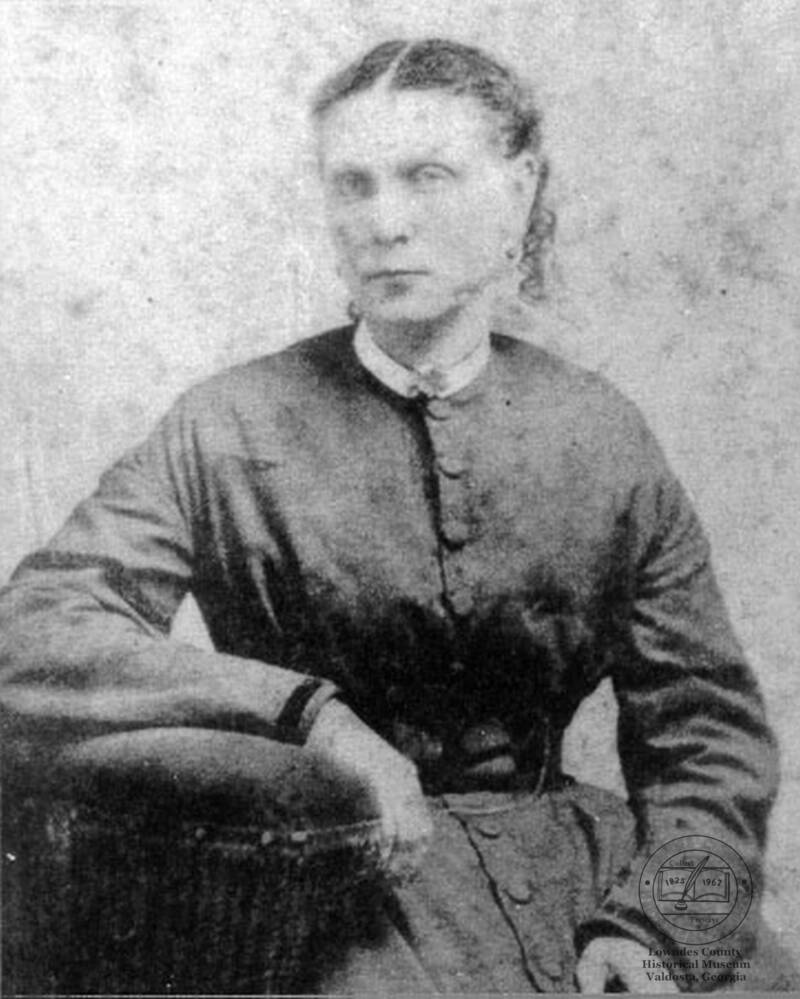
Lowndes County Historical Society MuseumJohn Henry Holliday’s mother, Alice, doted on her only biological child.
But tragedy struck the Holliday family when he was 15: his beloved mother died of tuberculosis.
Alice Holliday’s death ended his childhood in more ways than one. Doc Holliday had been close with his mother and was devastated after her death. To make matters worse, his father shrugged off the South’s traditional mourning period and remarried just three months later — triggering a legal battle with his in-laws over his late wife’s inheritance.
Despite family strife, Holliday seemed well on his way to following his father’s respectable path. In 1870, he enrolled in the Pennsylvania College of Dental Surgery and graduated two years later.
But the young man’s infamous temper was simmering beneath the surface.
One anecdote from 1872 describes how Holliday, enraged that Black boys were at his favorite swimming hole, whipped out his shotgun and fired at them.
His cousin, whose father witnessed the incident, insisted that “he shot over their heads.”
But Bat Masterson, a contemporary of Doc Holliday’s who wrote a profile of his life in 1907, described how “Holliday waited until he got a bunch of them together, and then turned loose with both barrels, killing two outright, and wounding several others.”
Like a good deal of Holliday’s life, the racist swimming hole encounter is often overshadowed by his legend — and the body count remains unclear.
Some have posited that the episode was the reason Doc Holliday went West. However, most sources agree Holliday left Georgia because he got sick. Shortly after starting his own dentistry practice, he was diagnosed with consumption, or tuberculosis, the same disease that had killed his mother.
Doc Holliday was given just a few months to live. When one doctor suggested that dry air might extend his life, Holliday took a fateful chance. He headed west.
Holliday Heads Out To The American Frontier

Library of CongressDeadwood, South Dakota in 1888. Deadwood was one of the many Wild West towns Doc Holliday passed through.
In October 1873, Doc Holliday moved to Dallas, Texas.
He arrived at the doorstep of the American Frontier just as it had begun to fade. Dallas was considered to be the “last big city before the uncivilized Western Frontier” — but it wouldn’t be that way for long.
The Frontier was shrinking. The completion of the transcontinental railroad in 1869 had made western land easily accessible. By 1890, the superintendent of the U.S. Census would note that “there can hardly be said to be a frontier line.” Pursuing gold, opportunities, and second chances, Americans had flooded westward.
But in Holliday’s day, the West was still plenty wild.
Newly arrived in Texas, Holliday tried to make a respectable living. He put his schooling to use and found work as a dentist. This was also when people began calling him “Doc.” But Holliday had not outrun his tuberculosis. His violent coughing fits disconcerted patients, and consequently, business dwindled. Eventually, Holliday had to find another means to make money.
What could an intelligent, savvy Southerner do? Holliday started to gamble.
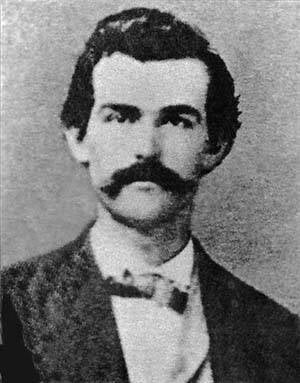
University of Nebraska LincolnDespite being a gambler and gunfighter, Doc Holliday was deputized to battle outlaws during the Gunfight at the O.K. Corral in Tombstone, Arizona on October 26, 1881.
Gambling sparked Doc Holliday’s Wild West adventures. He was good at it. But the games came with risks — even beyond the money one might lose — so Holliday armed himself with a six-shooter revolver and allowed rumors of his quick temper to spread wherever he played.
In Dallas in 1875, Holliday got into an altercation with a saloonkeeper named Austin that broke out into a gunfight. Skipping town, he then got into trouble in Fort Griffin for illegal gambling. Heading next to Jonesboro, Holliday happily accepted the mantle of “the Deadly Dentist.” He went from Texas to Denver, then from Denver to Cheyenne, rolling like a tumbleweed through Wild West towns.
In 1877, Holliday returned to Fort Griffin, Texas. Here, he’d make two fateful acquaintances: Mary Katharine “Big Nose Kate” Horony and Wyatt Earp.
Doc Holliday Meets Wyatt Earp And Winds Up In Tombstone
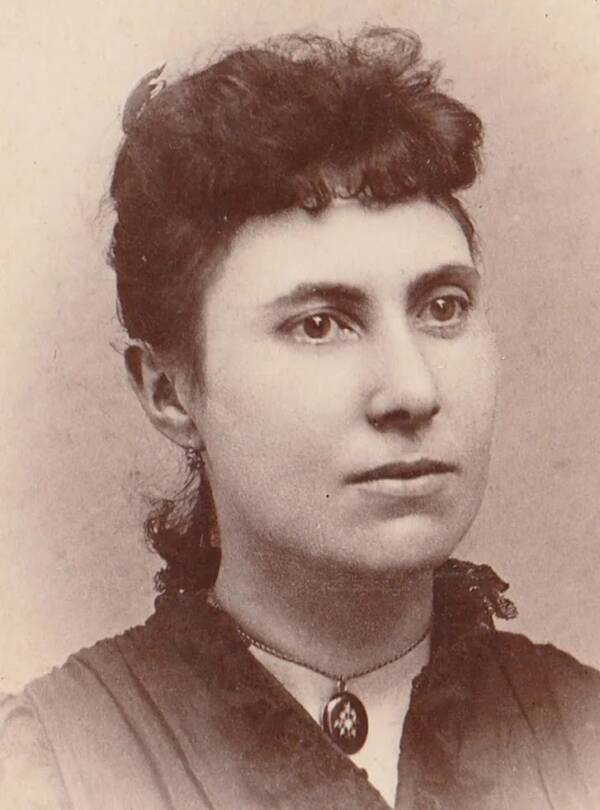
Wikimedia Commons“Big Nose” Kate was the only significant romantic relationship of Doc Holliday’s life.
Horony and Holliday met, unsurprisingly, in a bar. Doc was dealing cards at John Shanssey’s saloon, and Horony was working as a dance hall girl and a prostitute. In Horony, Holliday met his match: she was tough, stubborn, and had a temper that could rival his.
At John Shanssey’s saloon, Doc Holliday also met a lawman named Wyatt Earp. Earp was in town from Dodge City, Kansas, on the tail of a train robber named Dave Rudabaugh. Holliday, as a card dealer, knew about the comings and goings of people. He gave Earp valuable information on Rudabaugh, eventually leading to his capture.

Wikimedia CommonsWyatt Earp, who became one of Doc Holliday’s closest friends. Circa 1869 or 1870.
Thus, a fateful friendship was born. After Holliday got into trouble in Fort Griffin, he and Horony followed Earp to Dodge City. There, Doc Holliday tried his hand at respectability. He started a dental practice, putting out an ad in the Dodge City Times in June 1878 which read:
“John H. Holliday, Dentist, very respectfully offers his professional services to the citizens of Dodge City and surrounding county during the Summer. Office at Room No. 24 Dodge House. Where satisfaction is not given, money will be refunded.”
In Dodge City, Holliday and Horony clashed. She left him and Doc went back to gambling. But where one friendship faltered, the other strengthened.
One night in the Long Branch Saloon, a group of cowboys burst through the door and began to heckle the customers, Doc Holliday and Wyatt Earp among them. One of them had a run-in with Earp in the past and shouted: “Pray and jerk your gun! Your time has come Earp!”
But before anyone could respond, Doc Holliday pulled out his revolver and put it to the cowboy’s head. “No, friend, you draw – or throw your hands up!”
Wyatt Earp later described this as the beginning of his friendship with Holliday, saying, “I am a friend of Doc Holliday because when I was city marshal of Dodge City, Kansas, he came to my rescue and saved my life when I was surrounded by desperadoes.”
At the end of 1879, Wyatt Earp decided to join his brothers Virgil and Morgan in an Arizona mining town called Tombstone. Doc Holliday soon followed.
But trouble followed Doc wherever he went — and it certainly found him in Tombstone.
Doc Holliday’s Part In The Gunfight At The O.K. Corral
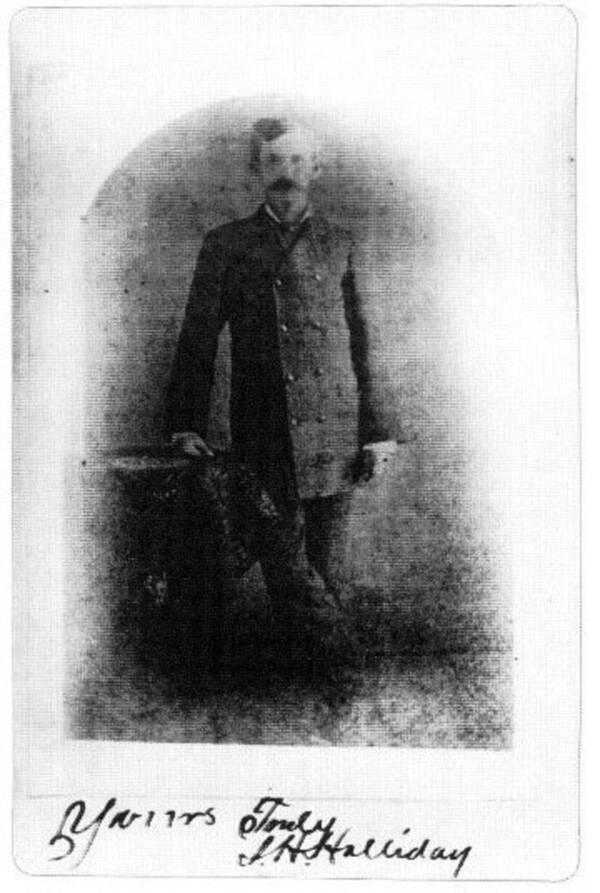
Wikimedia CommonsDoc Holliday poses for a photograph in Prescott, Arizona. 1879.
Doc Holliday and the Earp brothers are most famous for what happened in Tombstone, Arizona: The shootout at the O.K. Corral.
Although Holliday could hardly be considered a man of the law, he had aligned himself with lawmen — Wyatt and Virgil Earp.
Tombstone was a town where the lawlessness of the Wild West still reigned supreme, and Virgil tried to keep the peace as the town marshal.
“The Tombstone country is of a peculiar character, the community being unsettled and dangerous,” Virgil Earp told the Arizona Daily Star in 1882. “An officer doing his duty must rely almost entirely upon his own conscience for encouragement.”

Wikimedia CommonsTombstone, Arizona in 1881.
Doc Holliday and the Earps regularly clashed with a group called the Cochise County Cowboys, or just “the Cowboys.” They were a group of cattle rustlers that consisted of two sets of brothers: Ike and Billy Clanton, Frank and Tom McLaury, as well as men like Billy Claiborne, Johnny Ringo, and others.
In October of 1881, the tension between the Cowboys and the lawmen came to a head — and it all had to do with Doc Holliday.
On October 25, Holliday clashed with Ike Clanton at a Tombstone saloon. The two exchanged threats before Virgil eventually pulled Holliday away, but Clanton later crossed paths with Wyatt Earp outside, and he did not cool any tempers.

Wikimedia CommonsIke Clanton, one of Tombstone’s “Cowboys” who clashed with Holliday and the Earps.
“Tell your consumptive friend, your Arizona nightin’gale, he’s a dead man tomorrow!” Ike Clanton said.
Watt Earp responded, “Don’t you tangle with Doc Holliday — he’ll kill you before you’ve begun.”
The next afternoon, Ike and Billy Clanton, Tom and Frank McLaury, and Billy Claiborne all gathered on Fremont Street, between Fly’s Photo Gallery and Jersey’s Livery Stable. It wasn’t long before word of their plot reached the Earp brothers: They were planning to kill Doc Holliday.
Virgil Earp headed over to lay down the law. He gathered his brothers Wyatt and Morgan, and Doc Holliday naturally insisted on joining them. According to Tombstone by Tom Clavin, Holliday immediately asked:
“You’re not going to leave me out of it, are you?”
Wyatt Earp responded, “This is none of your affair.” To which Doc said, “That is a hell of a thing for you to say to me.” It was no use arguing — Doc would be part of the shootout.
Holliday and the Earps confronted the Cowboys near the O.K. Corral. Virgil Earp demanded that they give up their weapons, but everyone instead drew their guns.
When the gun smoke cleared, three of the Cowboys were dead. Thirty shots had been fired in thirty seconds — and those thirty seconds would echo through history.
The Legacy Of The Gunfighting Dentist Long After His Untimely Death
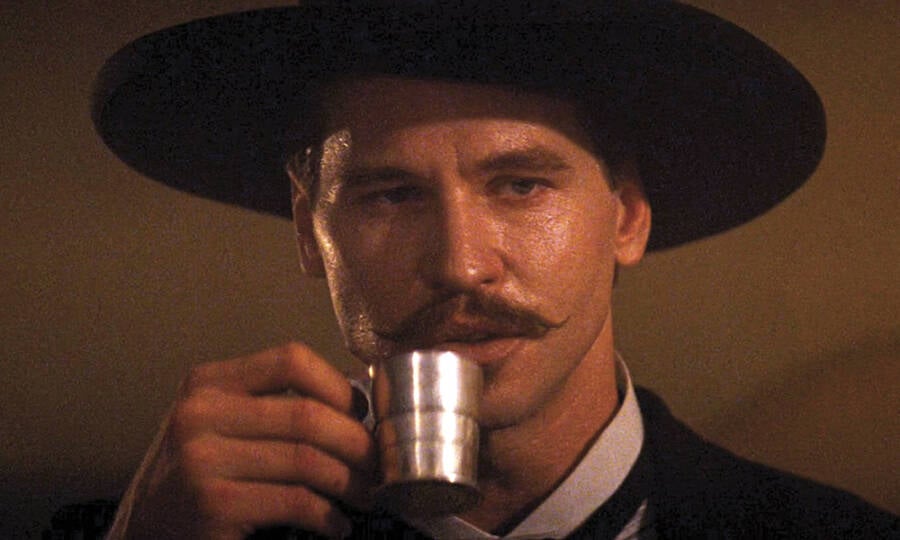
Buena Vista PicturesVal Kilmer as Doc Holliday in Tombstone.
Doc Holliday is best known for that shootout at the O.K. Corral, especially because he would die only six years later. Yet his legacy has grown ever since.
His reputation as a gunslinging outlaw, however, may be overblown. He’s purported to have killed scores of people — but most of these accounts are impossible to verify. Even Virgil Earp thought Holliday’s violent reputation was exaggerated. To The Arizona Daily Star, he noted:
“There was something very peculiar about Doc. He was gentlemanly, a good dentist, a friendly man, and yet outside of us boys I don’t think he had a friend in the Territory. Tales were told that he had murdered men in different parts of the country; that he had robbed and committed all manner of crimes, and yet when persons were asked how they knew it, they could only admit that it was hearsay, and that nothing of the kind could really be traced up to Doc’s account.”
His depiction by Val Kilmer in the 1993 film Tombstone helped further cement Doc Holliday’s status as a Wild West icon. “Doc appeals to something deep and visceral in the human psyche which explains why he remains so fascinating to people,” noted Gary Roberts, a Holliday biographer.
One of the most memorable scenes in Tombstone features Kilmer as Holliday telling Johnny Ringo, “I’m your Huckleberry” — before shooting him dead. It’s unconfirmed if Holliday ever used the phrase, but it was likely first attributed to him in a 1928 book by Walter Noble Burns. Ringo’s death, as well, has never officially been attributed to Holliday: It was deemed a suicide at the time, but many theories have sprung up over the years.
What is true and what is a myth about Holliday may never be entirely understood. But how did Doc Holliday die? Sources agree on that much. The gambling dentist went to Glenwood Springs, Colorado in May 1887, hoping that the hot springs could help with his tuberculosis.

Glenwood Springs Frontier Historical SocietyA possible photo of Doc Holliday shortly before his death that was found in 2015.
They didn’t. On November 8, 1887, the 36-year-old Holliday had a shot of whiskey in bed. Right before he died, he looked down at his bare feet and said “This is funny.”
Doc Holliday had always assumed he’d die with his boots on.
After reading about the life of Wild West gunslinger Doc Holliday, learn about fellow Wyatt Earp associate “Texas” Jack Vermillion. Then, read the sad stories of Wyatt Earp’s wives Mattie Blaylock and Josephine Earp.





